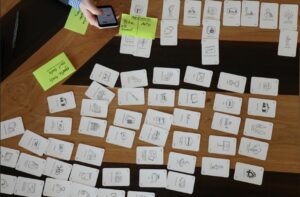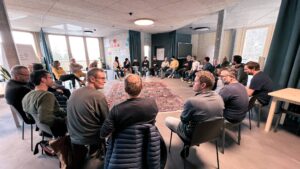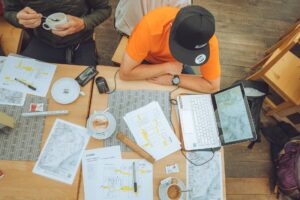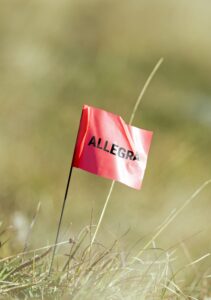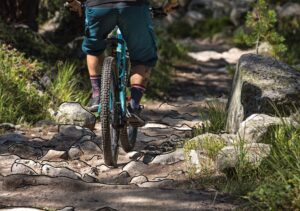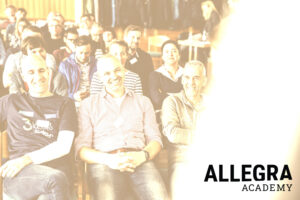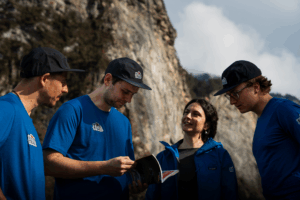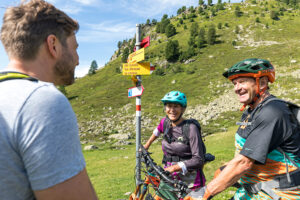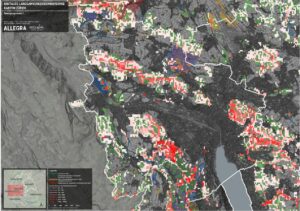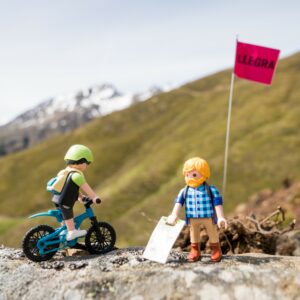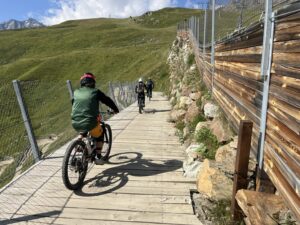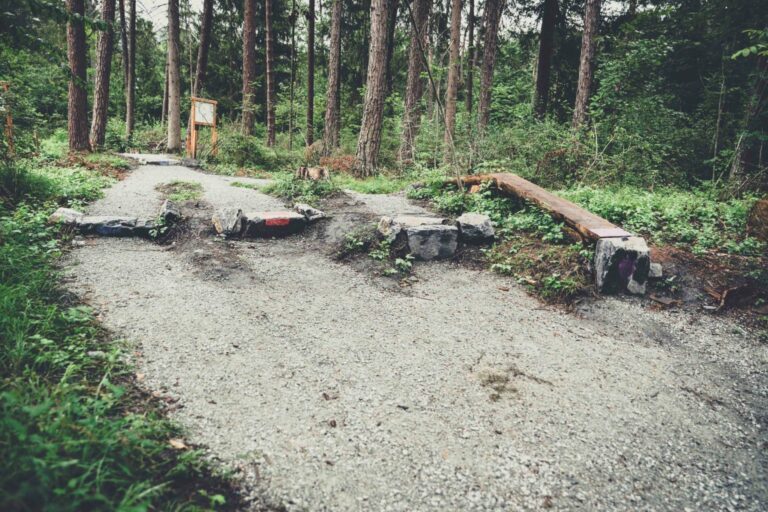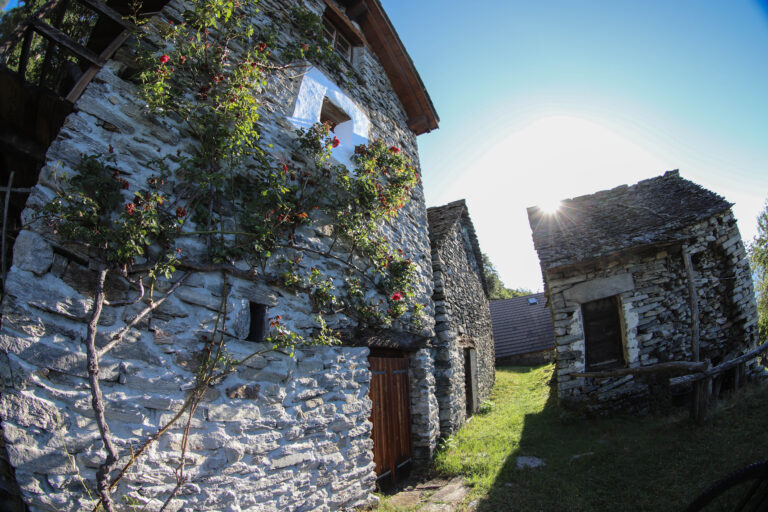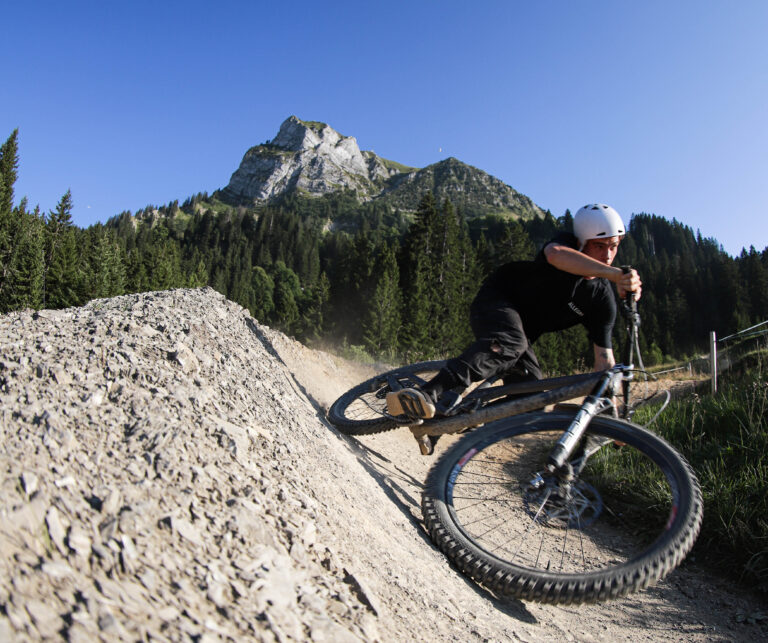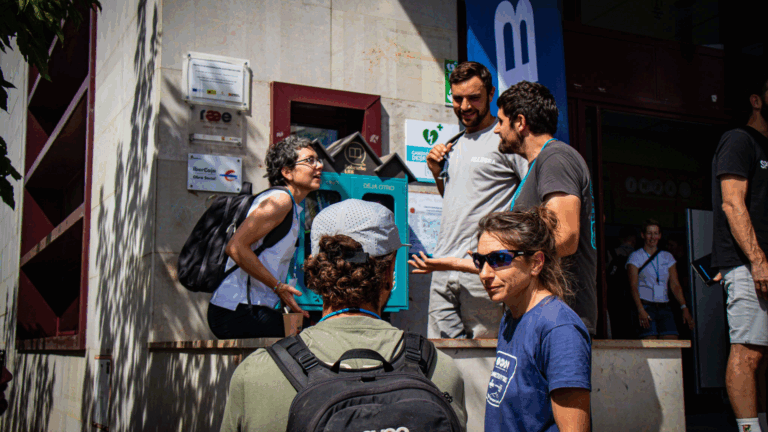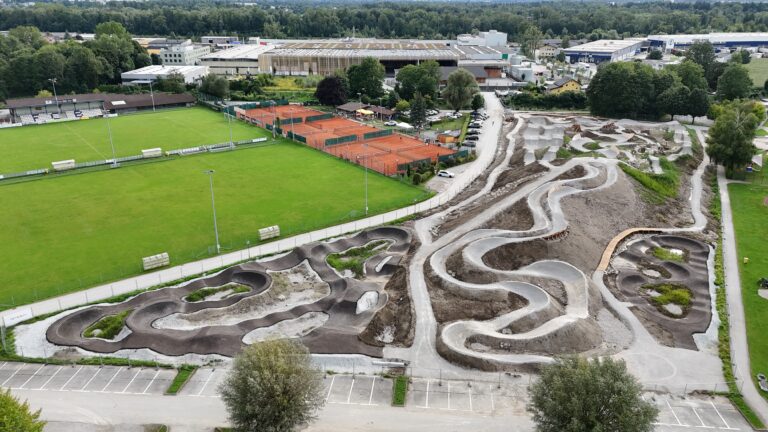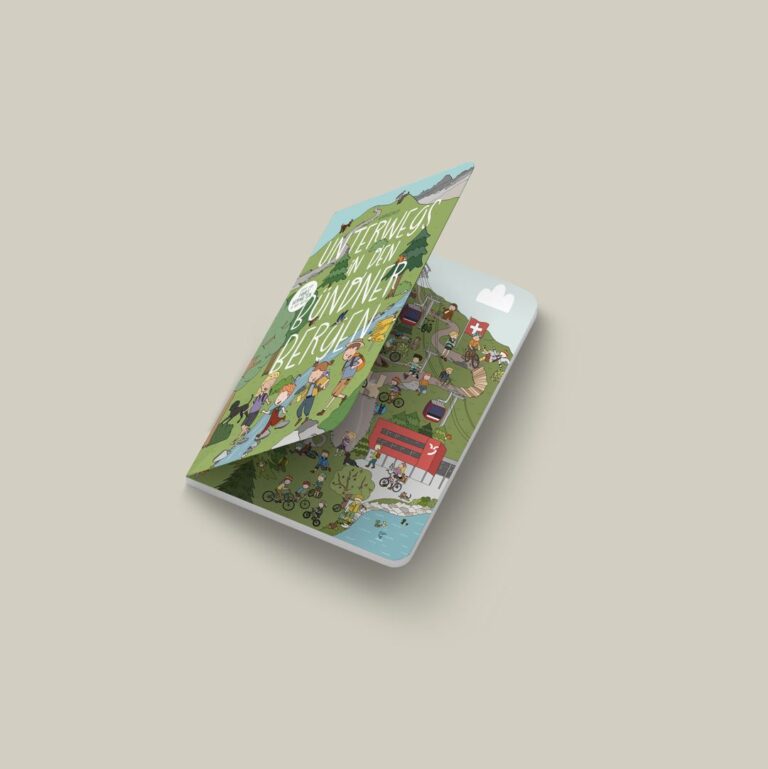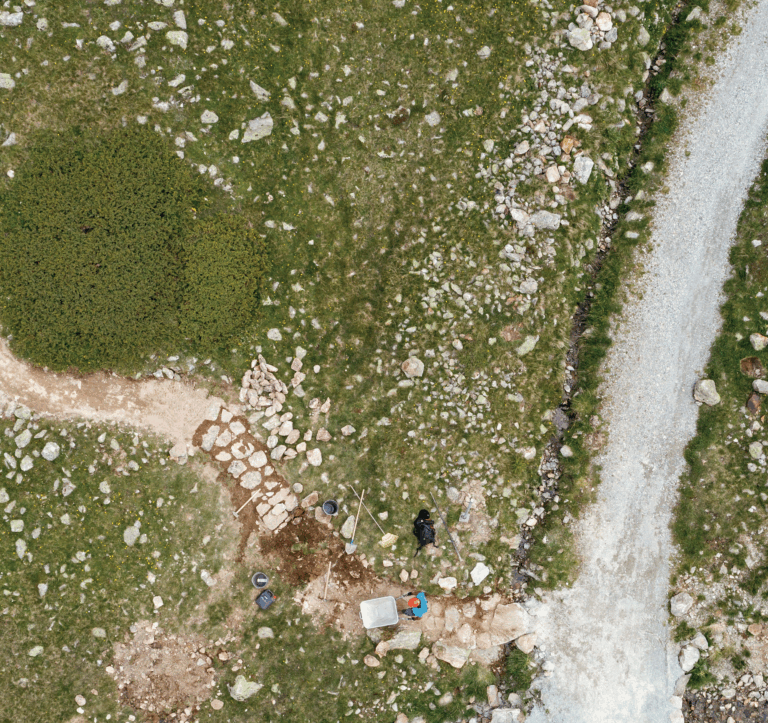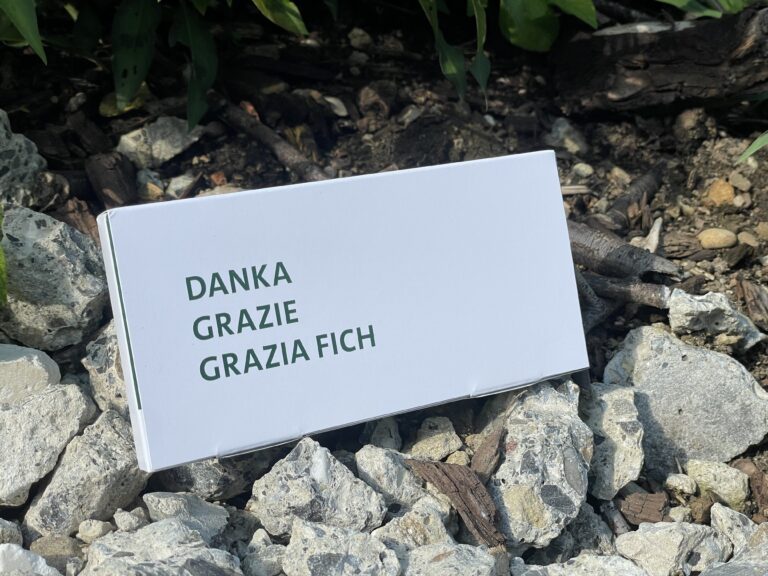Generally speaking, coexistence is about the peaceful coexistence of different users and stakeholders on non-motorized transport routes. But how do we achieve this? We'll outline our approach to best promote the interests of all stakeholders.
DEFINITION – a holistic perspective
In the context of mountain bike destinations and offerings, coexistence is often equated with peaceful coexistence. This applies to mountain bikers on the one hand, and those on foot on the other. But this only shows one relationship. If we want to analyze the perspectives of coexistence holistically, we must consider all user and interest groups who share the same space. These could be trail runners, ski tourers, walkers, etc. In English, the terms "shared trail," "multi-use trail," or "multi-use trail networks" are more commonly used. To take the wheel even further: it's not just about the users who seek recreation in the same space, but also about those who use the space for other purposes: for example, hunting, forestry, agriculture, or alpine farming. Furthermore, coexistence also includes the environment and everything that occurs around the trails—the flora and fauna, the soil, the air, the water. It is therefore fundamentally about the sustainable use of the resource "space" or "environment." As everywhere where needs converge, they must be managed. These perspectives must be taken into account when we talk about coexistence and peaceful coexistence.
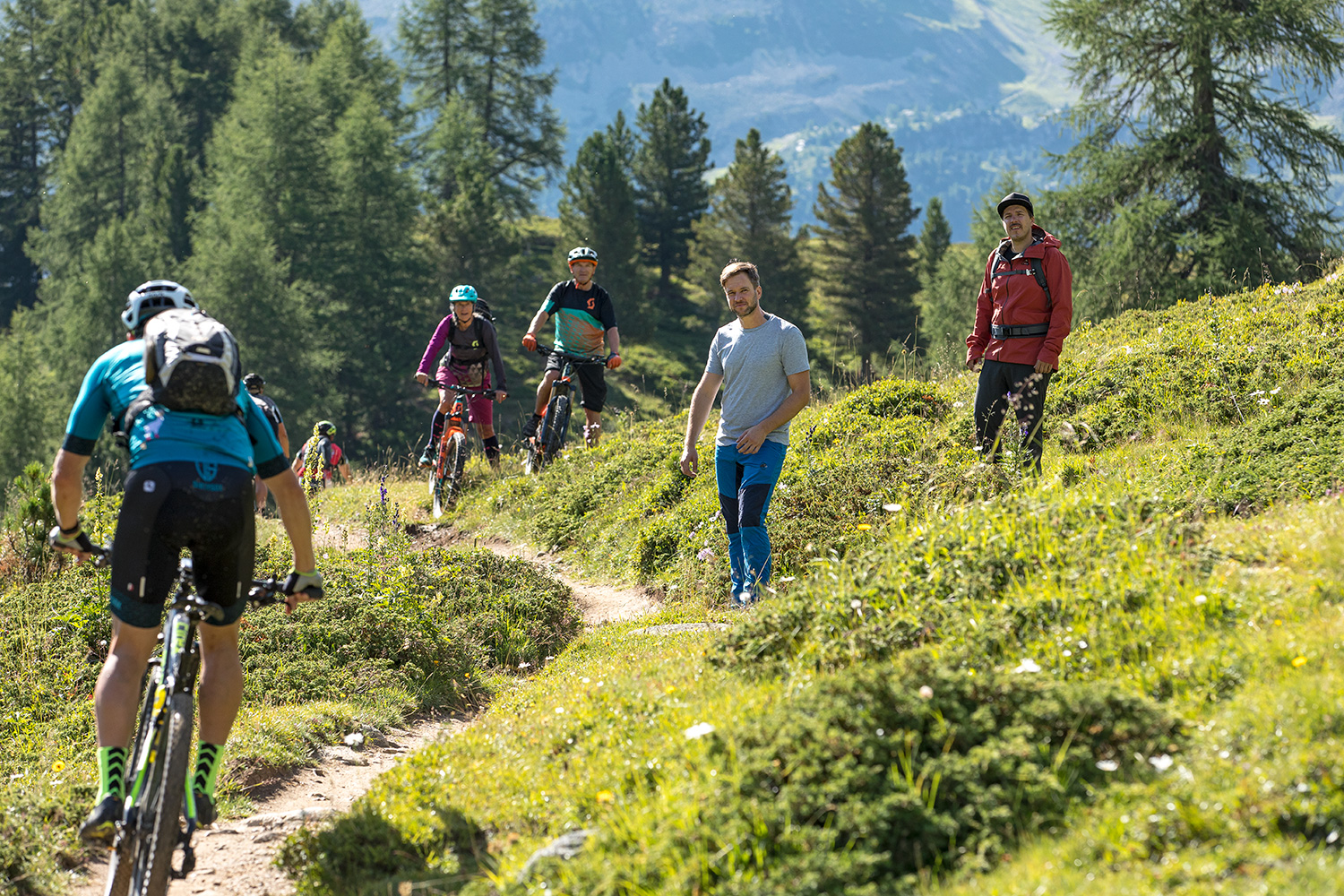
ALPINE vs. URBAN, TOURISM vs. RECREATION - a broad spectrum
Coexistence is evident in both urban and alpine areas, although the focus is different. It is difficult to clearly distinguish between "urban" and "alpine"; rather, it is a spectrum. There are both rural areas (alpine pastures in the Jura) close to cities and urban areas in the alpine region (cities such as Chur, Innsbruck, etc.). The motive should also not be overlooked: Are users here for tourism purposes, to spend their holidays? This usually, but not always, refers to alpine areas. Or is it more about seeking relaxation as easily as possible and right on one's doorstep? It is important to consider not only tourism but also local recreation. Due to the sheer number of people, the need for coexistence measures often seems greater in urban recreational areas. Consideration for nature should be taken everywhere anyway.
UNBRANCHING – share or divide?
There is often a widespread belief that we need to completely separate user groups to ensure peaceful coexistence – in other words, an infrastructural decongestion. The result, put simply, would be: there is one path for cyclists and one for hikers. However, this is rarely necessary and makes little sense from an ecological and economic perspective – and even then, only occasionally. There is generally space available; there are many paths that are rarely used. Measures are only necessary where collisions cannot be avoided. In principle, the goal is always coexistence – i.e., as many users as possible on the same path.
The same applies to bans: In our opinion, these are the last resort. There are other tools for separation: For example, through the development of specific offerings with a magnetic effect for specific user groups. If positive guidance is provided, user flows can be directed and attracted accordingly. We have a very simple means in St. Moritz This is used where many users gather in a small space in front of a mountain restaurant. A separate bike lane with attractive bike park modules creates a magnetic attraction for cyclists.
Alternatives available to other user groups are always important. In certain locations, restricting accessibility in other ways has also proven effective. For example, by only allowing bike transport on certain mountain railways. Time-based separation is also possible.
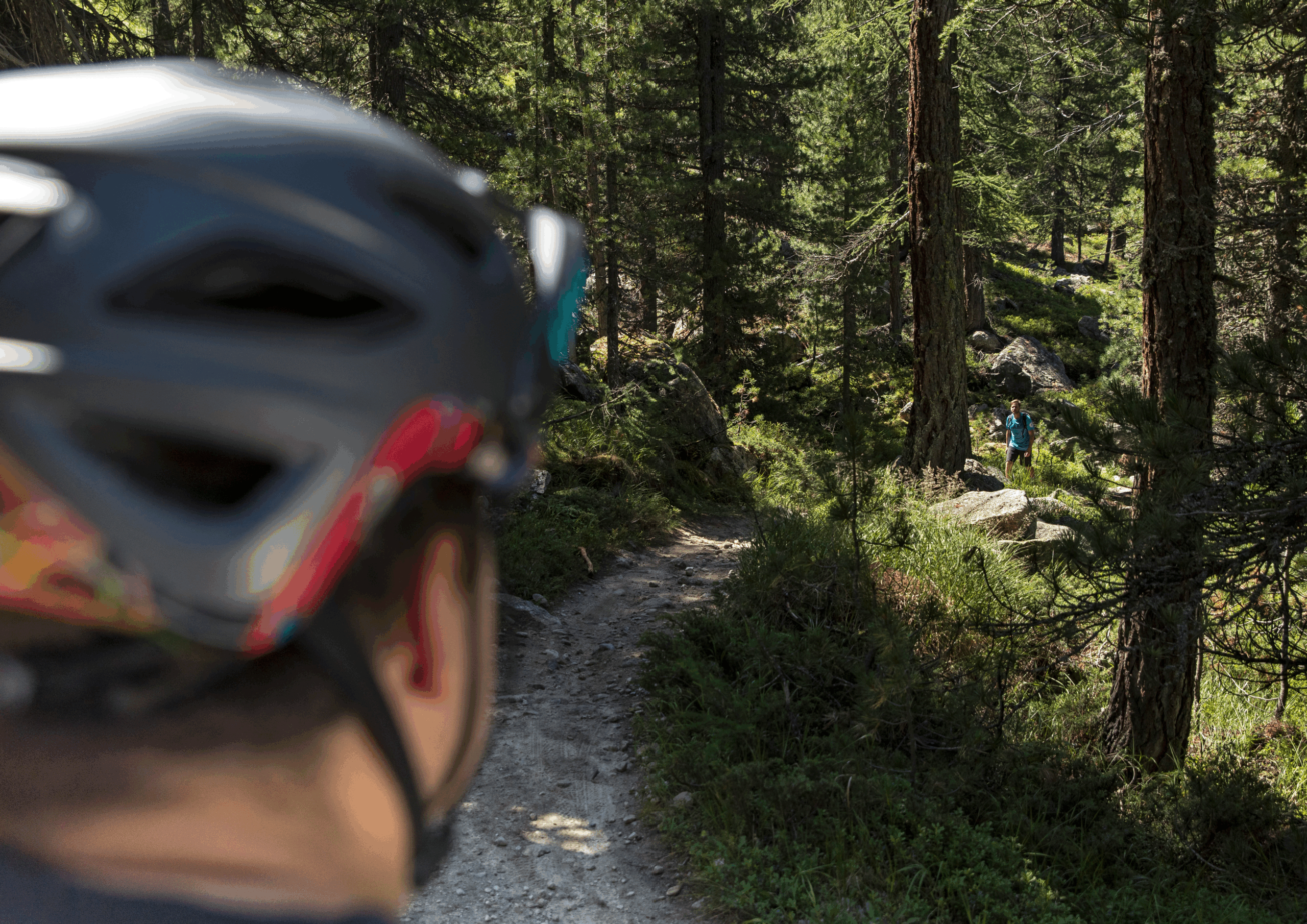
PROCEDURE – our cycle of measures
But how do we promote peaceful coexistence between different user and interest groups? Ideally, we go through three or four levels or measures in a cycle. The starting point isn't fixed, but at ALLEGRA we have a favorite starting point and a level where we say: It's better not to start here. We'll come to that later in the article.
SITUATION ANALYSIS - behind the scenes
The key is careful, behind-the-scenes planning for the trail network. Where does what happen, where should people move more and with what kind of mobility, and where should they move less? This includes planning on a map, but also numerous roundtable discussions and stakeholder discussions. In addition, there are planning, permitting, and approval processes, manuals, and guidelines. Only when all possible concerns have been considered as best as possible can a consolidated plan be developed.
OFFER DEVELOPMENT - on stage
Once you've decided what should take place where and for whom, we develop good offers. These are the best argument and an effective method for channeling user groups accordingly. If the trails in one place are convincing from the perspective of mountain bikers, then they rarely switch to other routes. The right trails, for the right target group in the right places, are crucial and contribute to coexistence. Clear signage is an equally important component. Technical design and construction measures and adaptations are also an effective means of channeling. If cyclists can be slowed down at critical meeting points so that the encounter can be more relaxed and peaceful, this contributes to peaceful coexistence. You'll soon find out exactly how this works in a separate blog post with practical tips from our trail construction experts. We'll be happy to send you the link - would you like a reminder?
COMMUNICATION - let's talk about it
Communication is a powerful tool for promoting peaceful coexistence. Demonstrating that different user groups are encountering each other here usually raises awareness. This can also be achieved through direct contact and dialogue. Our expert Kevin also successfully develops fairtrail awareness campaigns together with and for the Canton of Graubünden. And with the ALLEGRA Academy, we have also created a unique online training platform to educate, train, and sensitize the stakeholders involved. BUT: Communication is the level where we recommend not starting. Because as long as the planning and service design are not yet properly developed, we are only promoting peaceful coexistence without having provided the peaceful and necessary framework for it. Communication can be supportive, but alone cannot achieve coexistence.
MONITORING - what's going on on our paths?
Today, we can measure what's actually happening on our trail network. This is important for determining whether the coexistence measures are working as planned. This will never be entirely the case, so we use monitoring to measure the movements and the actual frequency of various modes of mobility on our trail network. This can be done qualitatively, for example, through surveys of trail users or by analyzing complaints/complaints received on specially created platforms. This is followed by a quantitative analysis by measuring user flows and frequencies. Today, valuable data is obtained through a mix of analog and digital data that shows what type of use is taking place when and where on the trail networks. Our monitoring and hybrid frequency measurement expert, Benni, can tell you much more. This step is important for making data-based decisions in planning or as a controlling tool to adapt and optimize the other steps for a successful long-term result. This completes the cycle that enables us to achieve the best possible and peaceful coexistence for all users and stakeholders.
ALLEGRA – Full of confidence for a more peaceful coexistence!
We at ALLEGRA didn't invent coexistence. It goes back much further, as you'll learn in this article. But we have developed a professional approach and applied it many times to ensure coexistence in the best possible way. ALLEGRA means confidence – and that's who we are. We are confident that our concept and ideas will achieve the best results for every user group and everyone involved. There is no perfect, universal solution. We advise and act individually at the various levels and in the various measures. Our experts would be happy to work with you to identify possible approaches and recommendations for action: for your mountain railway, your region, your municipality, or your canton. At all levels – for more peaceful coexistence and lived coexistence.
Feel free to write to us if you have any questions or would like to spread the word about coexistence.
The topic of coexistence is discussed in this training video by ALLEGRA Academy Masterclass from our Darco also clearly explained again.

